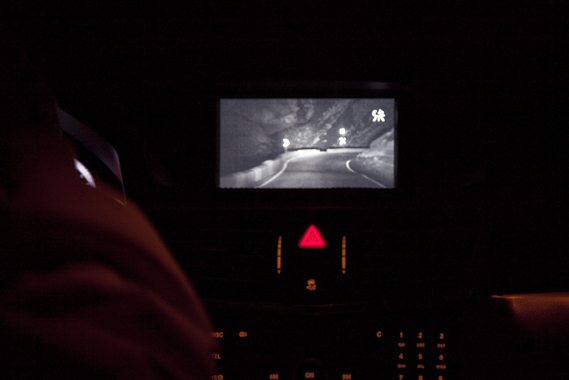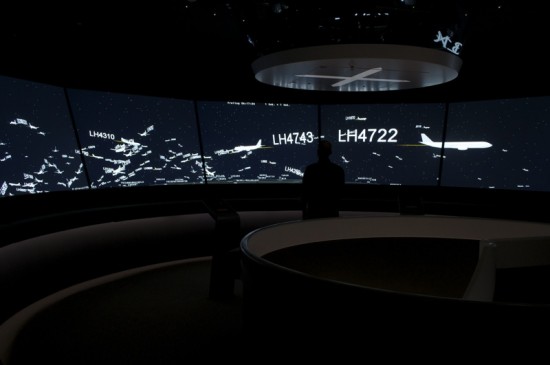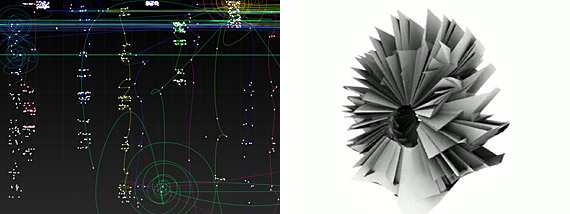
To test the night vision technology in the Mercedes E-Class, Guy Bird took on the hairpins of the Stelvio Pass in the Italian Alps, in the dark. With no lights. He also made a short film of his unusual road trip...
Night vision technology has come a long way since the first heat-sensing systems used in WWII by the US Army to spot enemy targets writes Guy Bird. Today, the latest systems are now so effective and affordable they're being offered as road safety devices on civilian cars.
Car manufacturer research found that many accidents were occurring on poorly-lit country roads due to cars only using dipped beams to avoid blinding on-coming traffic. They then worked out that night vision systems in tandem with dipped beams greatly enhance drivers' ability to see further down the road and spot hazards earlier.

To see how good night vision technology has become three plucky British journalists drove up the infamous 60-hairpin Stelvio Pass in the Italian Alps in a night vision-equipped Mercedes E-Class at midnight, and then taped up the exterior lights to see if the night vision system alone might be enough to navigate by.
The car uses ‘near infrared' technology (also known as ‘active infrared') to allow the driver to ‘see' just beyond the visible light spectrum of the human eye. It works by illuminating the road with invisible, and therefore non-reflective, infrared light from the car's two inner front headlamps. A tiny infrared light-sensitive camera mounted in the windscreen then records what it sees and beams the greyscale images to a small LCD display on the dashboard.

The system in the new E-Class not only detects pedestrians, cyclists or obstacles up to 90 metres ahead, but also highlights them via a graphic on-screen framing device to help avoid them. Luckily, halfway up the Stelvio Pass at midnight pedestrians and cyclists are thin on the ground – but the technology's still useful for displaying the odd car, plus obstacles like stone walls and boulders, behind which lie huge drops down the mountainside.
Mercedes' system is not the first to be plumbed into a passenger car but most of the others major on ‘far' or ‘passive' infrared technology that processes infrared radiation and displays the images on the car's front windscreen.
While they can work up to greater distances than ‘near infrared' the images tend to be much grainier and lower resolution, and Mercedes says such heat-reliant systems don't always work as well if the object to be detected is of a similar temperature to the atmosphere around it, ie rocks or boulders warmed up by hot weather may fail to be picked up by the sensor.

To test the theory that our night vision really could substitute for headlights, the car's main and side headlamps were taped over, leaving only the tiny but crucial infrared light elements exposed. Even so, you'd be hard pressed to read a book by the light left remaining outside, let alone drive anywhere. A safety car drove several hairpins in front (to alert any cars coming the other way) and then it was the turn of our night vision car to set off.
Mercedes' system only kicks in at about 14mph, so once the night vision system has been activated by a small button in the dash it takes a real leap of faith to accelerate into the darkness and just wait for the satnav screen to start beaming back images. But put your foot down properly and the critical speed is quickly reached – a second later the camera is feeding back crystal clear, virtually real-time images to the driver's cabin.
It's a particularly unnerving experience driving a car up a narrow, unlit mountain pass navigating almost completely on the basis of images that resemble a black and white videogame on a screen normally reserved for consulting the satnav.ght vision But after some mental and physical adjustment, traversing the straighter sections gets easier and we go above 25mph.

The hairpins are trickier. The night vision images that feed back as each corner is taken are no more than a fast-moving blur of impending wall. The only way to tackle them is to pick a line hugging the outside wall before you enter the corner and make the turn into the middle of the darkness as smoothly as possible. Without being able to see inside the curve, memories of turns taken in daylight practice runs help, but as soon as the road straightens up again the night vision tech shows the path forward remarkably clearly. After ten minutes more concentration, and dozens more hairpins, the summit is reached.
Of course, ours was a slightly daft test that should ‘not to be tried at home' – or halfway up a mountain – but it nonetheless shows how sharp an image ‘near infrared' night vision can project and how effective a tool it could be for road safety. It's also quite affordable at £1,100 and could well filter down to cheaper and smaller models in time, just like so many other devices from airbags to ABS.
Guy Bird is a freelance journalist, specialising in cars and car design. This article appears in the CR February issue.
-----
Via Creative Review
Personal comment:
Just interested by the strange, unlikely (and a bit nerdly stupid) experience.















